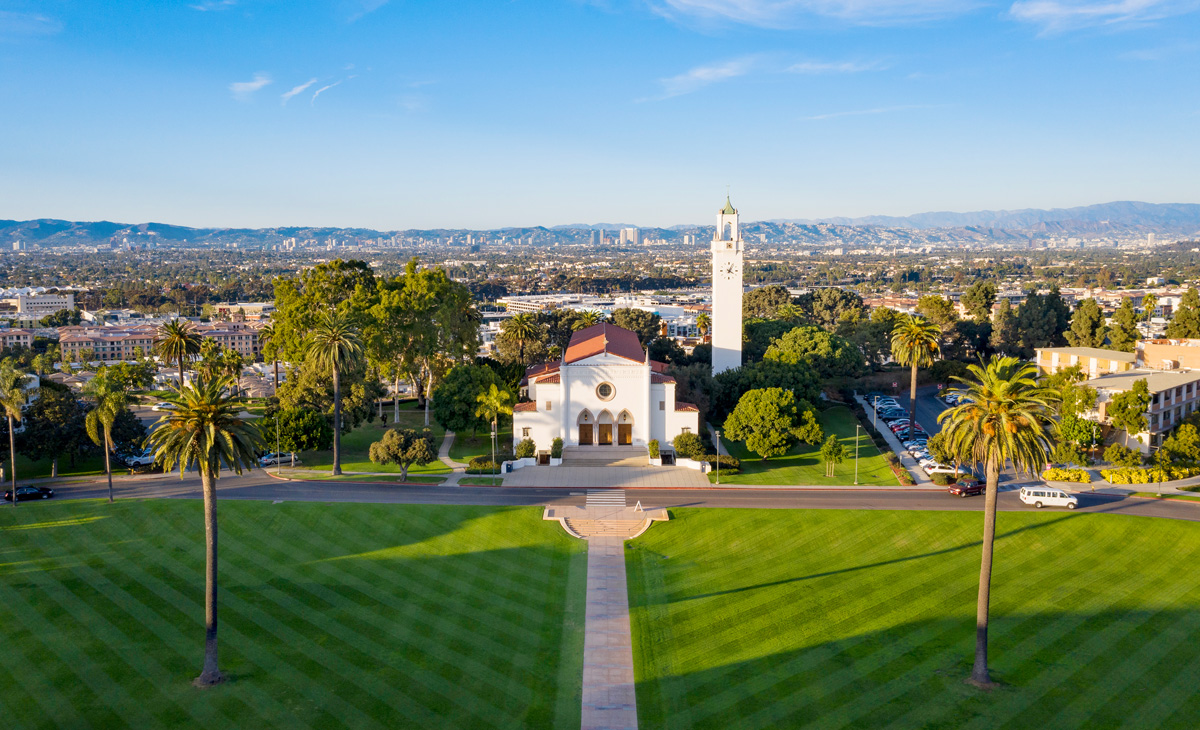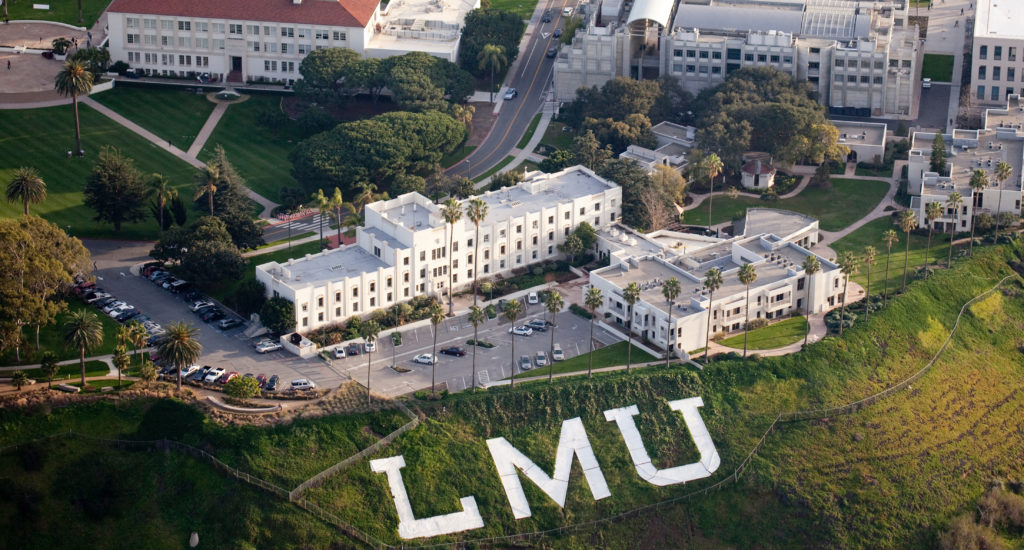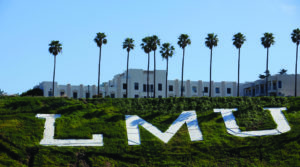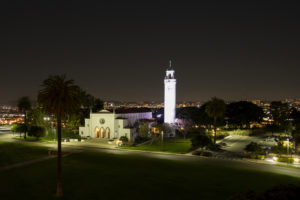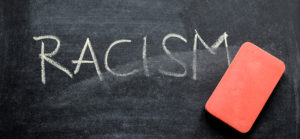by John T. Sebastian, Ph.D.
Vice President for Mission and Ministry
Professor of English
March 14, 2021
Well, friends, here we are: the Fourth Sunday of Lent, more or less the midpoint of our journey toward Easter.
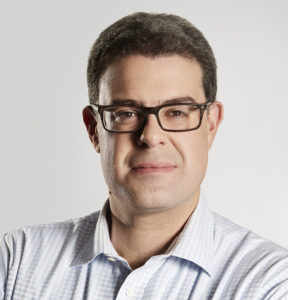
By now, most of us have probably made or heard the jokes about Lent, how it feels like it’s been Lent for about a year now. Surely we’ve been at this for longer than four weeks, no? In a year when everyday feels like Tuesday and little has changed since we gave up all semblance of normalcy last March, it’s hard to keep track of time’s flow. Even the normal liturgical cues—the absence of the Gloria or Alleluia during Mass or the different colored vestments worn by the priests—I’ve tried to do what I can—are missing, leaving us feeling somewhat disconnected from Lent.
For many of us this week is, however, the unofficial anniversary of the pandemic. This weekend a year ago was supposed to be the end of LMU’s spring break. But it was on this very day in 2020, March 14, that LMU’s Provost informed students that their return to instruction would be delayed an additional week to allow time for students living on campus to vacate their homes away from home and for faculty to shift their courses online.
But today is also Laetare Sunday, as Sister Rosemarie mentioned in her welcome. The name comes from the first word in Latin of the entrance antiphon for today’s Mass: Laetare, Jerusalem. “Rejoice, Jerusalem, and all who lover her. Be joyful, all who were in mourning; exult and be satisfied at her consoling breast.”
And perhaps those of us who have been in mourning are feeling a bit joyful for the first time this week. This anniversary of COVID, this Fourth Sunday of Lent, this Laetare Sunday also happens to fall at a time when at least here in California those of us who work in higher education have become eligible for and have in fact begun to receive the COVID vaccine. I went for my first shot on Saturday of last week. I found an appointment at one of the sites the L.A. Fire Department is operating in the Valley, so I had a little time during the drive to wonder how I would respond to the first dose, not just physically but emotionally. We have all heard stories about people receiving their jab and then heading back to their cars to wait their fifteen minutes to see if any adverse physical effects manifested, only to find themselves bursting into tears in sheer relief. I wondered whether that would be me.
Well, I didn’t have to wait until after the shot. As soon as I got into the modest line wending its way toward several makeshift tents, I found myself overwhelmed. Over the last year I’ve grown accustomed to seeing large numbers of people only from the shoulders up in little boxes on my computer screen, much like I see all of you today. Just looking at so many human beings in one place—young and old; black and brown and white bodies; individuals nervously shuffling through their paperwork and couples chatting familiarly—seeing all of those people, all strangers but all part of the same human family, who had come to this parking lot of all places seeking hope, seeking a reprieve from this year of untold suffering, seeking the light finally breaking through the darkness, seeing all of it filled me not so much with relief but with a real sense of joy. We made it. Things were about to get better. A new day was dawning. The morning of my shot I had been anxious—would I forget the necessary paperwork and be turned away, would I get stuck in traffic and miss my appointment, would I have a bad reaction to the vaccine?—but as I took my place in that line, all my anxieties seemed to melt away in the light of the noonday sun shining over head.
As I was praying over this week’s readings in preparation for sharing this reflection on Laetare Sunday, I couldn’t help but connect the dots to my own experience of joy following a long period of mourning. Many people have noted the difficulty of getting into the Lenten spirit this year. When you’ve been fasting for a year from friends and family, from being able to leave your home, from traveling, from all of your routines—or worse still when you have lost your livelihood, your sense of security in and about the world, when you have lost your health or your own loved ones have lost their lives—what more is there to give up? And yet after standing in that line last weekend, I couldn’t help but think that while getting into the spirit of Lent this year has been hard, never have I so fully appreciated what it means to be rounding the bend and heading toward Easter, toward rebirth and new life. As I thought back on the image of all of those people ahead of me journeying toward a nondescript, sunless and somewhat gloomy tent and popping out the other side with a new lease on life, I was struck by the ways in which the familiar Easter imagery had suddenly been made concrete; the idea of Resurrection suddenly seemed literal.
But Resurrection for what? The vaccine offers protection from suffering and death, to be sure, but to not die is not the same as to live in Christ and for one another. As we begin to emerge from this year of mourning, as we rejoice with the people of God on this Fourth Sunday of Lent, what are we being reborn to or for?
The beginnings of an answer to that question came via some bad news that interrupted my post-vaccine experience of joy. I learned a few days ago of the death a Jesuit named Scott Pilarz, who succumbed to complications from the ALS with which he had struggled for several years. Up until the time of his passing Father Pilarz was the President of the Jesuit University of Scranton in Pennsylvania. I first met Scott when I was a student at Georgetown and he was a new assistant professor in the English department. He had gone to Georgetown as undergraduate himself, and we both had an interest in theater, so I felt a kind of kinship with him. I eventually wound up doing an independent study with him on medieval drama. He lived in one of the residence halls on campus, and we used to meet in his apartment. He had just taken on the responsibility of caring for a bulldog puppy, the first “live” mascot the university had had in many years. She used to sleep next to me on the couch while we yammered on about 15th-century biblical plays. She was still very young, and one day in her sleep she inched her head, which probably weighed as much as the rest of her tiny body, a little too near the edge of the couch. Gravity took over from there, pulling her down and flipping her over, tail over head. The impact with the floor jolted her awake, and her confused yelp jolted us out of our seats before sending us into fits of laughter. During those meetings in his apartment, bulldog puppy snoring blissfully at my side, Scott introduced me to the plays that would eventually become the subject of my own academic work, although I had no idea that that was the direction in which God was guiding me through Scott.
Scott was a gifted teacher, a supportive mentor, and a friend. He was also a fine scholar. Prior to beginning the administrative work that would be the focus of his ministry for the last two decades of his too-short life, he published a book about the sixteenth-century Jesuit Robert Southwell. Southwell was a priest in Queen Elizabeth’s England at a time when that was a dangerous and potentially deadly occupation. And indeed in 1592 he was arrested, tortured, and eventually hanged for his faith. Southwell was also a poet, which was what attracted Scott to him. There was a particular line of Southwell’s that was a great favorite of Scott’s, so much so that as President at Scranton he had it engraved over the entrance to a prominent building on campus: “Not where I breathe, but where I love, I live.” “Not where I breathe, but where I love, I live.”
This line has really stuck with me this last week. The increasing availability of the vaccine promises us figuratively and literally the chance to breathe again. But being alive, being able safely to breathe, is not the same as living. Being alive is a passive state; living requires us to do something. “Not where I breathe, but where I love, I live.” What good is breathing, if we’re not living, and what is living if not loving?
In John’s Gospel today, we hear those famous words: “For God so loved the world that he gave his only Son, so that everyone who believes in him might not perish but might have eternal life.” God did not send Jesus into the world so that God could simply live among us or chastise us for our failings. God sent Jesus into the world in love and to love and to model for us how to love one another. For it is not where we breathe but where we love that we live! Easter, the Resurrection, the grand finale that we are building toward and which we can already glimpse from this midpoint of our Lenten journey, isn’t about being alive; it’s about living, and living is loving. Jesus brings the light into the world, but as John’s Gospel reminds us, it’s on us to do something with it. We are called to embrace the light, to do good deeds, to labor for justice, to realize Pope Francis’s vision of “a poor Church for the poor,” to stand in solidarity with the oppressed and marginalized and those who couldn’t breathe even before COVID because of the crushing weight of racism and to reform the structures that keep them captive. We are called to love, to stop preferring the darkness and to stand in the light.
As we begin the last leg of our Lenten journey, it is time to begin asking: who will we be as an Easter people? Who will we be as a vaccinated people? Who will we be as a people raised up with Christ Jesus, who, as Paul tells us today, brought us to life because of the great love and tender mercy that God has for us, even when we were dead in our transgressions? Do we yearn only to breathe freely again, unencumbered by cloth masks and the gripping fear of deadly invisible droplets? Or do we also yearn to change ourselves and our world so that the human indifference that enabled COVID 19 to claim so many lives and to devastate so many communities no longer has a place in our world? In the first reading we hear that the people of God mocked God’s messengers, despised God’s warnings, and scoffed at God’s prophets until there was no remedy. Will we do anything differently once we’re back to doing everything the same? Or will we, like the people of Judah in the first reading, add infidelity to infidelity and persist in our ways until there is no remedy? Must we wait for the next crisis or the next irruption of God into our world to start living and loving?
My wife and I have had a running joke throughout this last year. Early on in the pandemic, commentators would frequently point out the salutary effect that COVID was having on the environment. With fewer people commuting to work or flying on planes, greenhouse gas emissions went down and the environment started to make a bit of a comeback. So whenever things get grim at home, we look at each other, shrug our shoulders, and say, “Well, at least the environment is doing better.” Of course, part of the cynical humor of the joke derives from our knowing that we will all, she and I included, start poisoning the air again just as soon as we were able.
Not where I breathe, but where I love, I live. How will I live—not just breathe again—but truly live by truly loving, by seeing the poor among us who have borne unjustly the burdens of this pandemic; by changing my habits so that the earth, our common home, can also breathe again; by reconciling with those whom I have wronged or from whose suffering I have benefitted?
Not where I breathe, but where I love, I live. As our Lent of forty days and our Lent of many months begin to draw to a close, let us prepare to embrace the light, to rise up with our God, and to love so that we may well and truly live.
